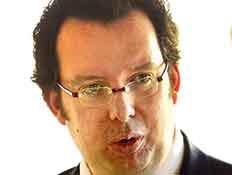“Sales down, prices up - foreign buyers blamed” screamed the headline, which, despite being 11,000 miles away, took me home in a millisecond.

As election fever grew, the New Zealand press were focusing on what they identified as the cause of the nation’s housing crisis.
Indeed, associating foreign sales with domestic housing problems is globally ubiquitous. Just this month, under the headline “Towers of secrecy”, a New York Times investigation named various high-net-wealth Russians and Chinese bulk-buying Midtown Manhattan condos. Even the French are experiencing the phenomenon, in an otherwise depressed housing market.
Significant levels of overseas sales remain mostly in prime areas and, as a proportion of the whole market, these sales are still relatively modest - about 3% in London’s case, according to the Bank of England. But politically it can be dynamite and it doesn’t change the very real problem of affordability that a great many Londoners (let alone Kiwis or New Yorkers) are facing.
Internationally there is a consensus that the only solution is to build, build, build, but to do so in a way that ensures what is being built is calibrated towards domestic demand. This reinforces the need for the debate about our housing market to broaden beyond planning barriers, as that is only part of the story to get more homes built. There needs to be further action around land and construction to both increase and broaden supply.
Here there’s an interesting parallel with New York. Under both mayors Bloomberg and de Blasio, there has been a major push to redevelop public land for housing. The same is true in the UK. What’s striking, however, is how much public data on land ownership exists in NYC. There is a comprehensive, searchable database for all Greater London Authority (GLA) Group land and property - although 94% of City Hall-owned sites are now developed or being so - but the data on other public bodies, despite intensive efforts, is still inadequate.
That’s part of the thinking behind a new London Land Commission. The group, a partnership between government and the mayor, will drive making land, both public and private, available for development. It will expand the existing property database to all public bodies, creating a ‘Domesday Book’ of public assets. It will make use of new powers, buried in clause 27 of the Infrastructure Act, to transfer surplus land to the GLA to dispose of it more effectively. It will bring in resource and expertise where too often it is lacking.
But it will also go beyond the publicly owned stuff. There are brownfield sites identified for at least 400,000 homes, set out in the opportunity areas. Yet the information on previously developed land hasn’t been updated for almost 10 years. So the existing National Land Use Database (remember that?) will be relaunched for London, alongside some intensive site investigation to understand the barriers, technical or otherwise, to developing key sites, which if built should act as a catalyst for an entire area.
Indeed, kickstarting development in areas of high potential is also behind the 2,000 hectares designated within the initial nine housing zones. The land, proposed by boroughs, includes the redevelopment of two civic centres as well as redesignating industrial land for homes. It is hoped these housing zones could do for residential what an enterprise zone helped to achieve at Canary Wharf.
The zones offer focus, both in terms of planning and engaging bodies such as the utility companies to accelerate the necessary infrastructure and £400m of capital. In particular, this funding is flexible, recyclable, long-term and is being spent on a kaleidoscope of measure. There are five bridges, five station upgrades, loans to developers, discrete land acquisitions and much more.
Each intervention results in firm agreements to develop, for the initial nine zones, at least 28,000 homes. And, of course, at prices that Londoners who are essential to the economic success of this city can afford.
Richard Blakeway is deputy mayor for housing, land and property





























No comments yet